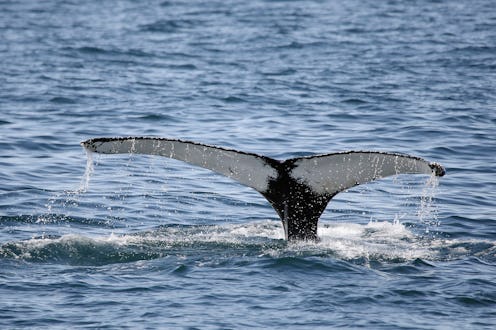
How does the bulging carcass of a humpback whale end up on dry land, considerably removed from its usual hangout spot in the ocean? It's a question that seems to have taken hold of marine biologists on Brazil's Marajó island, near the Amazon, where a dead humpback whale was found some 50 feet away from the shore, according to BuzzFeed News on Monday.
The Bicho D'água Institute, a local nonprofit group that observes wildlife on the island, uploaded photos of the bizarre sight. According to BuzzFeed News, the whale was discovered as a result of locals noticing birds picking at its corpse in the island's mangroves. According to researchers at the Bicho D'água Institute, the whale was 26 feet long and at least a year old.
Peculiar as the images may be, academics like Daniel Palacios, who teaches oceanography and marine habitat at the Oregon State University, told BuzzFeed News: "The Amazon is a mighty river, so not completely unexpected. This animal was found more in the estuary or the mouth of the Amazon."
The National Oceanic And Atmospheric Administration says an estuary has a "productive" and "delicate" ecosystem. It's the part of a river where the stream collides with the tides of the sea. In other words, an estuary is where both bodies of water meet. It's likely that the powerful tides pushed the whale further inland.
While intense tides in the estuary may have pushed the whale into the mangroves of the island, the timing of the appearance has left marine oceanographers like Palacios curious. As BuzzFeed News noted, humpback whales in the Atlantic ocean can be separated in two groups based on the northern and southern hemispheres.
During the summer season, these whales tend to stay around Antarctica where they will stock up on food. In winter, they head over to the Caribbean for mating purposes. Based on these habits, the young whale was in a strange area. "Right now we’re in the Northern Hemisphere winter, and that’s what makes it more unusual," Palacios told BuzzFeed News.
The whale's age also points to other possible explanations. Considering that researchers at the Bicho D'água Institute assert that the dead whale was about a year old, it may have been a lost calf that eventually starved to death without its mother. Although it is not confirmed at the moment, a possible explanation from BuzzFeed News is that an orca attack may have startled the young one and forced it to flee the area.
According to The New York Times, Bicho D’Água's president Renata Emin told the Brazilian news website GI that the humpback whale was likely already dead before it reached the island. The institute's president added that researchers at the nonprofit group were examining the body of the young whale to determine if it had been hurt by any nets or boats.
This might just help: Palacios told BuzzFeed News that by inspecting the whale's carcass and finding out its true age, marine biologists may have a chance to get to the root of this mysterious appearance.